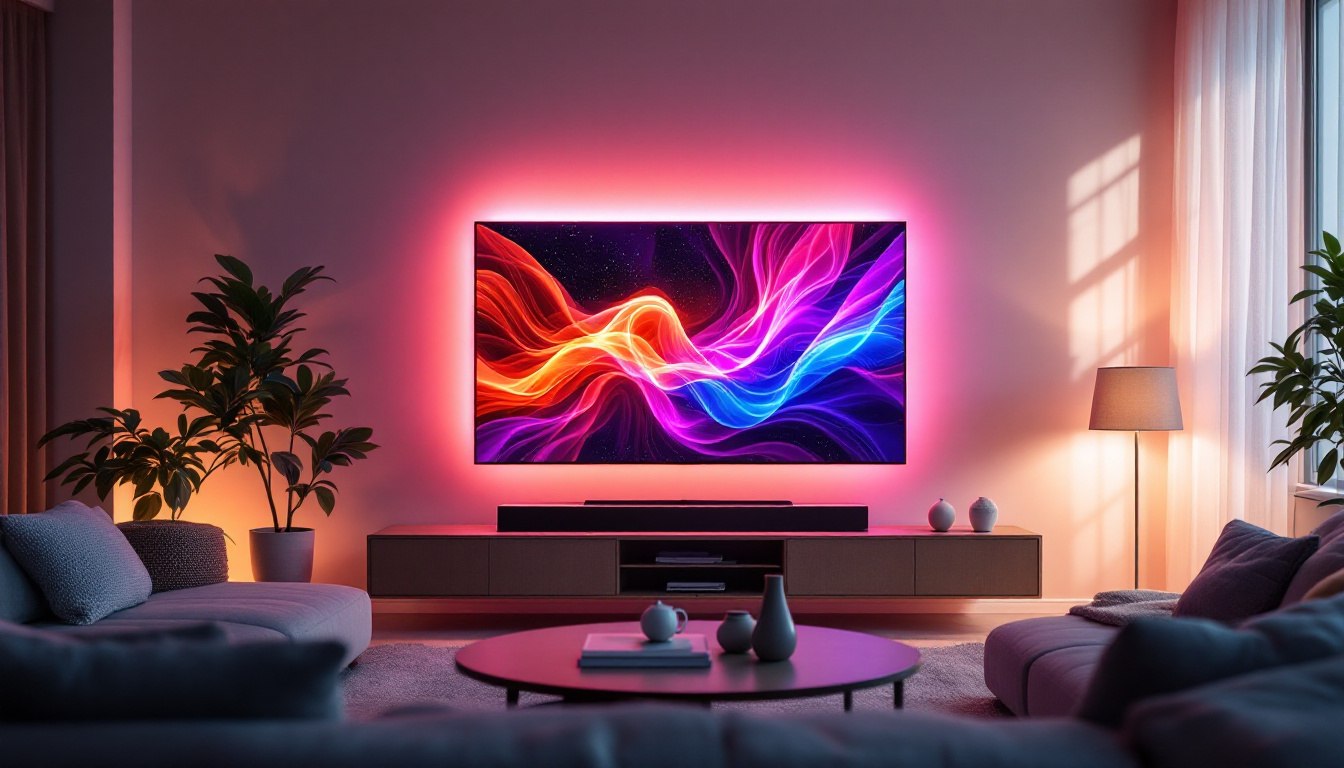In the realm of modern technology, displays have become an integral part of our daily lives. From smartphones to televisions, the quality of a display can significantly impact the user experience. Two of the most common types of displays are LCD (Liquid Crystal Display) and LED (Light Emitting Diode). While often used interchangeably, these technologies have distinct differences that can influence performance, energy efficiency, and overall visual quality. This article delves into the intricacies of LCD and LED displays, exploring their functionalities, advantages, and applications.
Understanding LCD Displays
What is an LCD Display?
LCD, or Liquid Crystal Display, is a technology that utilizes liquid crystals to modulate light. These displays are composed of several layers, including a backlight, polarizers, and liquid crystal layers. The backlight, typically fluorescent or LED, shines through the liquid crystals, which can be manipulated to create images. The combination of these elements allows for the creation of vibrant images with varying colors and brightness levels.
One of the key characteristics of LCD displays is their ability to produce sharp images with high resolution. This makes them suitable for a wide range of applications, from computer monitors to televisions and mobile devices. However, LCDs do have some limitations, particularly in terms of contrast and color reproduction when compared to newer technologies.
How LCD Displays Work
The operation of an LCD display is based on the manipulation of light. When an electric current passes through the liquid crystals, they align in a way that either allows light to pass through or blocks it. This process is controlled by thin-film transistor (TFT) technology, which provides precise control over each pixel. The backlight shines through the liquid crystals, and by adjusting their alignment, different colors and brightness levels are achieved.
Moreover, LCDs typically require a backlight to illuminate the screen, which can affect the overall energy efficiency of the display. The quality of the backlight also plays a crucial role in the overall performance of the display, influencing brightness and color accuracy.
Advantages and Disadvantages of LCD Displays
LCD displays offer several advantages, including their slim profile, lightweight design, and relatively low power consumption compared to older technologies like CRT (Cathode Ray Tube). They are also less prone to screen burn-in, a common issue with older display technologies.
However, there are drawbacks to consider. LCD displays can struggle with viewing angles, as colors may appear washed out when viewed from the side. Additionally, the contrast ratios are typically lower than those of OLED (Organic Light Emitting Diode) displays, which can result in less vibrant blacks and overall image depth.
Exploring LED Displays
What is an LED Display?
LED displays are a type of LCD display that utilizes light-emitting diodes as a backlight instead of traditional fluorescent lights. This technology has gained popularity due to its ability to produce brighter images with improved color accuracy and energy efficiency. LED displays can be further categorized into two types: edge-lit and backlit.
Edge-lit LED displays have LEDs positioned along the edges of the screen, while backlit LED displays have a full array of LEDs behind the screen. The latter offers better uniformity and contrast, leading to a superior viewing experience. LED technology has revolutionized display quality, making it a preferred choice for many consumers.
How LED Displays Work
LED displays operate similarly to LCDs, but with a significant difference in their backlighting. In an LED display, the light source consists of numerous tiny diodes that emit light when an electric current passes through them. This allows for greater control over brightness and color, resulting in more vivid images.
Furthermore, the ability to dim individual LEDs enhances the contrast ratio, allowing for deeper blacks and brighter whites. This capability is especially beneficial in dark environments, where traditional LCDs might struggle to produce accurate images. The advancements in LED technology have made it possible to create displays that are not only brighter but also more energy-efficient.
Advantages and Disadvantages of LED Displays
LED displays offer numerous advantages over traditional LCDs. One of the most significant benefits is their improved energy efficiency, as they consume less power while providing brighter images. Additionally, LED displays have a longer lifespan compared to traditional LCDs, making them a more durable option.
However, there are some disadvantages to consider. LED displays can be more expensive to manufacture, which may lead to higher retail prices. Furthermore, while they offer better contrast and color accuracy, the quality can vary significantly between different brands and models. Consumers should be aware of these factors when making a purchasing decision.
Comparing LCD and LED Displays
Image Quality
When it comes to image quality, LED displays generally outperform traditional LCDs. The enhanced backlighting technology allows for brighter images with improved contrast and color accuracy. This is particularly noticeable in darker scenes, where LED displays can produce deeper blacks and more vibrant colors.
However, it’s essential to note that not all LED displays are created equal. The quality of the components and the technology used can significantly impact performance. High-end LED displays may offer superior image quality compared to lower-end models, regardless of whether they are labeled as LCD or LED.
Energy Efficiency
Energy efficiency is another critical factor to consider. LED displays are typically more energy-efficient than traditional LCDs, consuming less power while delivering brighter images. This can lead to lower electricity bills and a reduced environmental impact, making LED displays a more sustainable choice in the long run.
Moreover, the longevity of LED technology contributes to its overall efficiency. With a longer lifespan, consumers can expect to replace their displays less frequently, further reducing waste and energy consumption associated with manufacturing and disposal.
Cost Considerations
Cost is often a determining factor when choosing between LCD and LED displays. While LED technology has become more mainstream and affordable over the years, it can still be more expensive than traditional LCDs. This price difference can be attributed to the advanced technology and components used in LED displays.
Consumers should weigh the benefits of LED displays against their budget. While investing in a higher-quality LED display may offer better performance and longevity, those on a tighter budget may find that traditional LCDs still provide satisfactory performance for their needs.
Applications of LCD and LED Displays
Consumer Electronics
Both LCD and LED displays are widely used in consumer electronics, including televisions, computer monitors, and smartphones. The choice between the two often depends on the specific use case and consumer preferences. For instance, gamers may prefer LED displays for their superior response times and image quality, while casual users might opt for LCDs due to their lower price points.
In the realm of televisions, LED technology has become the standard for high-definition viewing, offering vibrant colors and deep contrasts that enhance the viewing experience. Similarly, in computer monitors, LED displays are favored for their clarity and responsiveness, making them ideal for gaming and graphic design.
Commercial Applications
beyond consumer electronics, LCD and LED displays are also prevalent in commercial applications. Retailers often use LED displays for signage and advertisements due to their brightness and visibility, even in well-lit environments. The ability to display dynamic content makes LED displays particularly effective for attracting customer attention.
In offices, LCD monitors are commonly used for everyday tasks, providing clear visuals for presentations and data analysis. As technology continues to evolve, the integration of LCD and LED displays in commercial settings will likely expand, offering new opportunities for businesses to engage with their customers.
Medical and Industrial Uses
In specialized fields such as medicine and industry, the choice of display technology can have significant implications. LCD displays are often used in medical imaging equipment, where clarity and precision are paramount. The ability to produce high-resolution images is critical for accurate diagnoses and treatment planning.
Similarly, in industrial settings, LCD and LED displays are employed in monitoring systems and control panels. The durability and reliability of these displays make them suitable for harsh environments, where performance is crucial for operational safety and efficiency.
The Future of Display Technology
Emerging Trends
The future of display technology is poised for exciting advancements. Innovations such as OLED and MicroLED are gaining traction, offering even better image quality, energy efficiency, and flexibility. These technologies promise to enhance the viewing experience further, with features like bendable screens and improved color accuracy.
Additionally, advancements in display resolution, such as 8K technology, are pushing the boundaries of visual fidelity. As consumers demand higher-quality images for gaming, streaming, and professional applications, manufacturers are continually striving to meet these expectations through technological advancements.
Environmental Considerations
As the world becomes increasingly aware of environmental issues, the display industry is also adapting. Manufacturers are focusing on creating more sustainable products, using eco-friendly materials and energy-efficient technologies. This shift not only benefits the environment but also appeals to consumers who prioritize sustainability in their purchasing decisions.
Furthermore, recycling programs for electronic devices are becoming more prevalent, allowing consumers to dispose of their old displays responsibly. As technology continues to evolve, the emphasis on sustainability will likely play a significant role in shaping the future of display technology.
Conclusion
In conclusion, understanding the differences between LCD and LED displays is essential for making informed decisions in today’s technology-driven world. While both technologies have their unique advantages and disadvantages, LED displays generally offer superior image quality, energy efficiency, and longevity. As technology continues to advance, consumers can expect even more exciting developments in the realm of display technology.
Whether for personal use or commercial applications, the choice between LCD and LED displays will ultimately depend on individual needs and preferences. By considering factors such as image quality, energy efficiency, and cost, consumers can select the display that best suits their requirements, ensuring an optimal viewing experience.
Discover LumenMatrix’s Advanced LED Display Solutions
Ready to elevate your visual experience with the latest in display technology? LumenMatrix is at the forefront of LED innovation, offering a comprehensive range of LED display modules designed for any application. From captivating Indoor LED Wall Displays to dynamic Outdoor LED Wall Displays, and from versatile Vehicle LED Displays to sleek LED Poster Displays, our solutions are crafted to maximize your brand’s visibility and audience engagement. Embrace the future of visual communication with LumenMatrix’s LED Sports Displays, Floor LED Displays, Custom LED Displays, All-in-One LED Displays, and LED Transparent Displays. Check out LumenMatrix LED Display Solutions today and transform how you share your message with the world.































